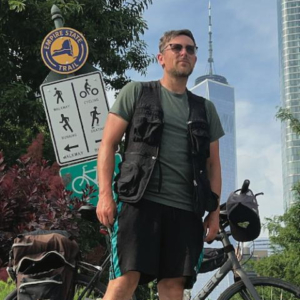Jacob Harver is a Youngstown, OH resident and entrepreneur working on a History PhD at Kent State University and on the Knox Bldg (a former Woolworth downtown). His interests converge on culture and mobility for the vitality of the city
Project Statement:
“The Demolition of Monkey’s Nest,” Mahoning Movement.
“The Demolition of Monkey’s Nest” is a written and GIS (Geographic Information System) history of a migrant working class neighborhood in Youngstown, OH that was demolished for a highway and business park in 1960. This project explores the spatial reorganization of society through transportation focusing on culture, labor, and housing. The Pennsylvania & Ohio Canal, opened in 1840 to connect the region in an evolving national infrastructure network that facilitated the area’s significance in the coal, iron, and steel industries. This enmeshed the region within an international labor market that was organized with patriarchy, classism, and racism. After over a century of growth, Youngstown became a poster child of deindustrialization into the 1980s and 1990s. The trajectory of transformation was already shaped through federal programs that subsidized suburbanization and urban renewal, often to the detriment of communities of color. Key to this was the 1956 Interstate Highway Act. This case study of a specific locale places it critically within a national and international context. It explores arguments of right to place and mobility, as well as the argument formulated by Staughton Lynd in a community’s vested interest in industry. This project is central to a larger history and advocacy effort called Mahoning Movement which looks at transportation along the Mahoning River in Ohio and advocates for a hike and bike trail with historic and cultural interpretation. An emerging national network of active transportation has the potential to chart a new course, especially for communities ravaged by deindustrialization. Exploring this mobility through time and space provides both new economic opportunities and a reckoning with its history. The site of the trail for in situ interpretation, along with institutions such as The Youngstown Historical Center for Industry and Labor enables a publicly accessible history in addition to a scholarly one.





